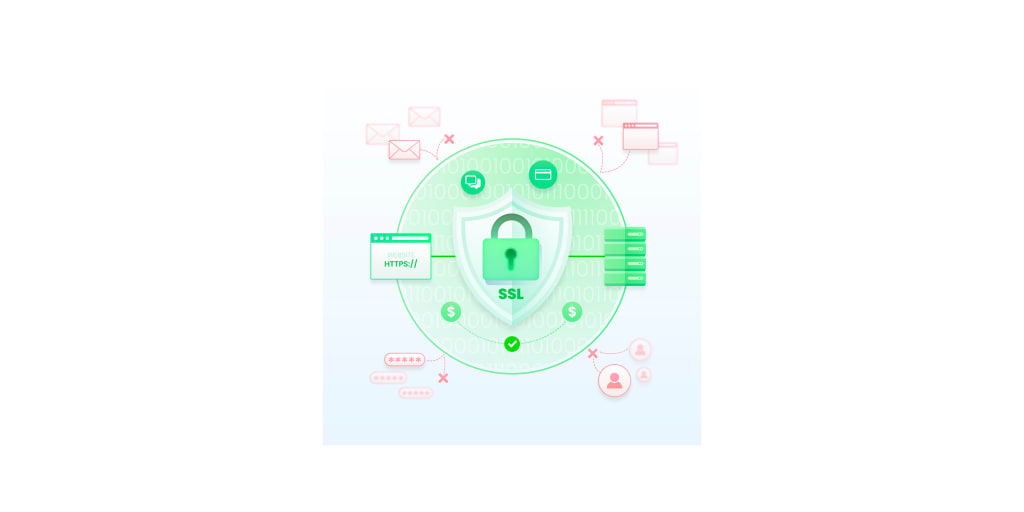Understanding the ERR_SSL_PROTOCOL_ERROR: How to Resolve SSL Protocol Errors
How to Solve the ERR_SSL_PROTOCOL_ERROR Mysteries: Learn the reasons behind this annoying SSL protocol problem and how to handle it effectively to provide a flawless and safe surfing experience.

Have you ever had to deal with the annoying ERR_SSL_PROTOCOL_ERROR while online? You could be unable to visit a website as a result of this error notice, which can occur without warning. The ERR_SSL_PROTOCOL_ERROR will be thoroughly examined in this article, along with its causes, symptoms, and, most crucially, a solution. So let's get started and learn more about this typical SSL protocol problem.
What is ERR_SSL_PROTOCOL_ERROR?
When there is a problem with the SSL/TLS (Secure Sockets Layer/Transport Layer Security) protocol, which is used to create a secure connection between your web browser and a website's server, you will get the error message ERR_SSL_PROTOCOL_ERROR. The data sent between your browser and the website is kept private and safe, thanks to SSL/TLS encryption. This error means that the SSL handshake procedure failed, which prevents a secure connection from being formed when it happens.
Causes of the error ERR_SSL_PROTOCOL_ERR
- Using an out-of-date or unsupported web browser might cause SSL protocol issues. Use the most recent version of your favorite browser to prevent compatibility problems.
- Websites cannot use SSL certificates that have expired to provide secure connections because they are no longer valid. The ERR_SSL_PROTOCOL_ERROR might occur if a website's SSL certificate has expired or is not properly set.
- Misconfigured SSL/TLS Settings: The server's incorrectly configured SSL/TLS settings can also result in protocol failures. To provide a flawless surfing experience, website managers must effectively configure SSL/TLS.
- Interference from a firewall or antivirus program: On occasion, too strict firewall or antivirus settings may prevent SSL connections, which results in protocol failures. Temporarily disabling these security measures may assist in determining if they are the root of the issue.
- Network Issues: SSL protocol problems might be a result of issues with your network or internet connection, such as DNS issues or proxy settings issues. It could be essential to investigate your network settings to fix the problem.
Fixing the ERR_SSL_PROTOCOL_ERROR Issue
- Clear Browser Cache: By deleting obsolete or faulty data from your browser's cache, you might potentially fix SSL errors. Clear the browsing history, cache, and cookies in your browser's settings.
- Update Your Browser: By maintaining an up-to-date browser, you can be confident that you are using the most recent security updates and compatibility fixes. To prevent SSL problems, go to your browser's official page and download the most recent version.
- Check the System Date and Time: Verify the system date and time since SSL protocol issues might result from an erroneous system date or time. Because SSL certificates are time-sensitive, be sure that your computer's date and time settings are correct.
- Temporarily disable your firewall or antivirus program: As was previously indicated, certain firewall and antivirus settings might obstruct SSL connections. Check whether the problem still occurs by temporarily disabling them. If it does, immediately enable them again to keep your computer secure.
- Website administrator to contact: It may be a bug on the website's end if you have an SSL issue on a certain website. Contact the website's administrator or support staff to report the problem and request their help.
- Try Accessing the Website Using a Different Browser: If the SSL problem still occurs, try using a different browser. This might assist in determining if the issue is with your browser or the actual website.
Conclusion
When attempting to access the web safely, the ERR_SSL_PROTOCOL_ERROR error might be a frustrating roadblock. You may successfully fix this SSL protocol problem by comprehending its reasons and using the above-mentioned troubleshooting methods. Recall to routinely clear the cache in your browser and check that the time on your computer is accurate. Don't be afraid to contact the website administrator for further help if the issue continues. You may explore the web with confidence and get rid of the ERR_SSL_PROTOCOL_ERROR by keeping these instructions in mind.
About the Creator
Enjoyed the story? Support the Creator.
Subscribe for free to receive all their stories in your feed. You could also pledge your support or give them a one-off tip, letting them know you appreciate their work.





Comments
There are no comments for this story
Be the first to respond and start the conversation.